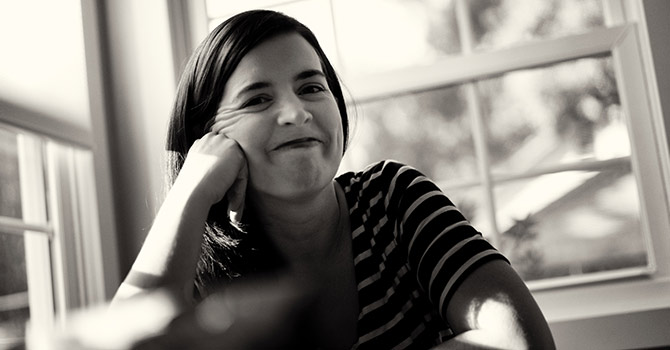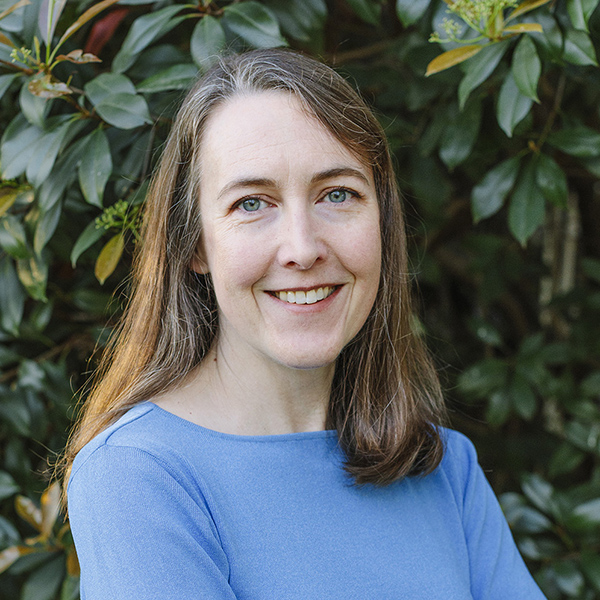Duke Divinity School professor Kate Bowler called me to talk through a critical direction-setting choice she faced. A few months before, she had chosen to fight for her life by aggressively treating stage 4 cancer. She wrote her story, later published in the New York Times, to explore what had happened and what it meant. On this day, a publisher had offered to publish her memoir as an “airport book.”
She knew what this offer meant.
The publisher thought her book could be a best-seller. Sharing her story could help many people by offering hope and a picture of faith in Christ. But to write this book and manage her growing public presence would take enormous time and effort -- time away from her research, her scholarly writing, her teaching, her family. And she was still sick, dealing daily with doctors and treatments.
Kate was pivoting.
She had a foot firmly planted in God, in her family and friends, and in her vocation. She was very clear about where she stood. But she wasn’t sure whether she should turn from the classroom to mainstream media.
With “Everything Happens for a Reason: And Other Lies I’ve Loved” now a New York Times best-seller, and her podcast, “Everything Happens,” cracking the top 100 podcasts on iTunes in February, it is clear that Kate made excellent choices in her pivot.
On the day we talked, Kate had a vision for what could be. She was pivoting into a world that she had carefully researched as a historian of the prosperity gospel movement. She knew that it would take time and sacrifice -- but she didn’t know how much, and she didn’t know how much help, or what kind, she would need to succeed. She had no guarantee that this pivot would work.
In a world that is volatile, uncertain, complex and ambiguous (VUCA), leaders must constantly figure out how and when to pivot -- to shift direction. Each person faces such pivots in his or her career. Each project, department and organization faces pivots. It is exhausting to consider so many moves. The future beyond each pivot is not more certain for us than for Kate. I recently explained to colleagues at Leadership Education about the latest shift in our strategy. The looks I got signaled exhaustion, their eyes silently saying, “Not again.”
How can you build up your capacity to determine how and when to pivot?
- Know yourself. What are your strengths and growing edges? What is your tolerance for risk and your level of energy? What do you have faith in? What is true and right? Answering these questions illuminates where you stand, your place to plant your foot.
- Know those you serve. What are the dreams, desires, needs and requirements of those you serve? What will help them?
- Evaluate your impact. What difference do you want to make? Is your current work making a difference? As the audience changes, what adjustment (if any) is needed to make an impact? Is that shift consistent with who you are?
- Decide how much to invest. Pivoting requires more trial and error than staying the course. How much time and energy will you give to a specific direction? New opportunities emerge constantly. How much attention can you pay to them?
Every organizational pivot involves hundreds of personal pivots. Leaders who pivot are asking many others to join the move. Changing behavior is never easy. An organizational pivot can mean learning new skills, paying attention to a different audience or different element of the audience, and risking failure.
One of the ministries I oversee has made three major pivots in the last five years as we’ve sought to make a significant impact in a financially sustainable way. Each pivot has led to new learning, deeper engagement and more impact. Unfortunately, none of these pivots has led to financial sustainability. Now, faced with the possibility of yet another pivot, we are wondering whether we have the energy -- and whether this one will work.
It requires so much energy to figure out the next move that I often make the mistake of taking the planted foot for granted. I talk with people about whom we should serve and what can be different, but my conversation partners often don’t realize what’s stable and what grounds us. Maybe it would be helpful to give my colleagues a whistle and empower them to call a foul whenever I talk about what is changing without also clearly affirming the foot that remains planted in our mission and values.
Working with Kate is a regular reminder about what is at stake in considering a pivot. Every decision Kate makes has life-and-death implications. I have yet to see her lose sight of either foot. She has a clear sense of what is important and what she is willing to change. I hope to be that thoughtful whenever I have the chance to pivot.

















